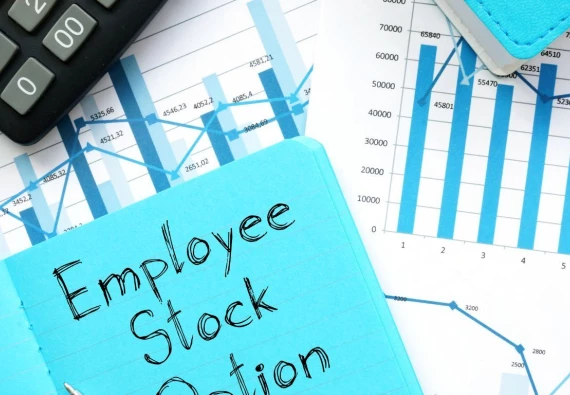*The “One Big Beautiful Bill Act” (OBBBA), signed into law on July 4, 2025, introduced significant updates to the Qualified Small Business Stock tax exemption. Changes include a higher exclusion cap, expanded company eligibility, and partial gain exclusions for earlier exits. If you’re reading this post for QSBS guidance, please be aware that the rules have changed. You can read more about the changes here.
Qualified small business stock (“QSBS”) presents huge tax saving opportunities for startup founders and early investors. Even startups that don’t plan to raise venture capital often choose to convert from an LLC to a C-corporation to be eligible for QSBS treatment, which you can learn more about in our post on LLC to C-corp conversions.
Related Post: QSBS: The Basics of Tax-Advantaged Startup Stock
But there are a number of other eligibility requirements for QSBS that present real obstacles for startups to actually realize QSBS tax benefits. One of these obstacles is the five-year holding period. For any stockholder to receive QSBS tax treatment, they must have held their shares for at least five years before selling.
As you can imagine, startups are often acquired less than five years after being formed. Ostensibly founders and other very early stockholders would be out of luck with respect to QSBS in these situations. But there are certain workarounds to the 5-year holding period which we’ll look at in this post.
Exchange QSBS for Buyer Stock in an Acquisition
Reinvest Proceeds into Replacement QSBS
Structure Delayed Sale of QSBS
Increase the Acquisition Consideration to in Effect Yield QSBS Benefits
Exchange QSBS for Buyer Stock in an Acquisition
The first workaround is to exchange QSBS for the buyer’s stock in an acquisition. Acquisitions may be structured to include an equity rollover component where selling stockholders exchange stock in the seller for stock in the buyer. This presents an opportunity for a QSBS holder to work around the five-year holding period if a sale occurs prior to that holding period being met. If a stockholder exchanges their QSBS for stock in the buyer in a Section 351 exchange or a Section 368 reorganization, the stockholder can tack on the holding period for the original stock to the buyer stock. Let’s look at an example of how this could work.
Example: Adam is the founder and CEO of Alpha. When Alpha sells three years after formation, Adam exchanges his shares in Alpha for shares in Beta. Three years later, Adam sells his share in Beta to Gamma. Despite only holding his shares in Beta for three years, Adam would satisfy the five-year QSBS holding period because his three year holding period of shares in Alpha would tack onto the holding period for the Beta shares.
Keep in mind that QSBS can be exchanged for buyer stock that is either QSBS or non-QSBS. This is important because a buyer in an acquisition scenario may have gross assets that exceed $50 million, meaning that the shares issued in exchange for QSBS in the acquisition will be non-QSBS.
Having said that, if a stockholder receives non-QSBS in exchange for their QSBS, their ultimate QSBS treatment will be less favorable than if they had received QSBS. If a stockholder were to receive QSBS, then the entire gain exclusion amount can be claimed (subject to the gain exclusion gap in Section 1202). However, where a stockholder receives non-QSBS, the gain exclusion will apply only to the amount of gain that is deferred when the exchange takes place. Future gain after the exchange will not be eligible for QSBS gain exclusion.
Example: Sticking with the facts of the previous example, let’s assume that Adam receives shares in Beta that are non-QSBS, that the amount of gain that’s deferred at the time of the exchange is $5 million, and that the amount of additional gain from the sale of Adam’s Beta shares to Gamma is $5 million. In that case, the first $5 million of gain that was deferred would be subject to the QSBS exclusion and Adam would pay no federal capital gains tax on this amount; however, Adam would be required to pay capital gains taxes on the additional $5 million of gain.
While exchanging QSBS for buyer stock in an acquisition can serve as a workaround for the 5-year holding period, it should be noted that this strategy comes with its own risks. By exchanging equity rather than receiving cash for shares, a QSBS holder is foregoing cash consideration in the present for the chance of further gains and favorable tax treatment in the future. The outcome is not guaranteed. It’s entirely possible that receiving cash consideration in the present, even if subject to applicable capital gains rates, will yield a better outcome than exchanging shares.
With all that said, if the buyer is insisting that a seller rollover at least a portion of their equity anyway, this can provide the seller with QSBS upside in the event that the rollover equity is sold after meeting the five-year holding period.
Reinvest Proceeds into Replacement QSBS
The next workaround is to reinvest QSBS sale proceeds into replacement QSBS. Section 1045 of the tax code allows proceeds from the sale of original QSBS to be reinvested into replacement QSBS within 60 days of the sale of the original QSBS. Doing this will defer taxes on any gain, and–as with the exchange scenario in the previous section–the holding period for the original QSBS will be tacked onto the holding period for the replacement QSBS.
So if original QSBS is sold before the five-year holding period but proceeds are reinvested into replacement QSBS within 60 days, then if the replacement QSBS is sold after the combined five-year holding period, the entire gain exclusion amount can be claimed (Subject to the gain exclusion cap in Section 1202).
Example: Alpha sells three years after formation and Adam, the CEO, sells his shares in exchange for cash consideration as part of the sale. Thirty days later, Adam invests the proceeds in Foxtrot in exchange for shares of QSBS, deferring taxes on his gains in the sale. When Adam sells his shares of QSBS in Foxtrot three years later, the entire gain amount from his sale of shares in Alpha and his sale of shares in Foxtrot can be claimed for QSBS treatment (subject to the gain exclusion cap).
While this workaround looks appealing, it can be a challenging strategy to execute. A seller only has 60 days to find a company in which to reinvest proceeds, and the company has to be eligible to issue QSBS. An early stage investor with a pipeline of potential investments will usually have a better chance of pulling this off than, say, a founder. But even for investors this may be a challenge, especially because the replacement QSBS must be stock, meaning not a convertible note or a SAFE (with the caveat that it’s possible, but by no means guaranteed, that the IRS could view a SAFE as equity for federal tax purposes depending on the circumstances).
For founders, perhaps the most reliable way to execute this strategy is to create a new startup and reinvest proceeds from the original QSBS sale in exchange for QSBS in the new startup. While this approach may be easier to execute, it also tends to be very risky as there is no guarantee that the new startup will be successful.
Related Post: QSBS: Strategies to Boost Tax Benefits for Founders
Structure Delayed Sale of QSBS
A third workaround is to structure a delayed sale of QSBS. In certain circumstances, a company being acquired may be able to structure an acquisition such that the closing date is delayed, with the objective of having some or all stockholders reach the five-year holding period. Unsurprisingly this workaround is most likely to be feasible when the delay would be relatively brief, e.g., a matter of weeks or perhaps a few months. There are many creative proposals a seller could come up with to try to extend a delay in closing, but they’re all likely to present additional complexities that a buyer may not be willing to accept.
One structure that will not work is to close the acquisition prior to the five-year holding period but defer actual payments until after the holding period is met. The relevant timing here is the sale date (i.e., the closing date), not the date of payment.
Increase the Acquisition Consideration to in Effect Yield QSBS Benefits
The final workaround we’ll look at here is to increase the acquisition consideration to effectively yield QSBS benefits. For companies with many acquisition suitors, there may be an opportunity to negotiate the terms of an acquisition to in effect yield QSBS benefits to QSBS holders, even if these holders sell their shares prior to the five-year holding period.
One way to do this is to increase the amount of the deal consideration to a point where QSBS holders will, even after paying capital gains taxes on sale proceeds, retain an amount approximately equal to what they would have earned if they had sold after meeting the five-year holding period. In effect, the buyer is subsidizing the sellers’ capital gains tax bill.
It’s worth reiterating that this approach is unlikely to work unless the selling company has significant leverage, typically due to interest from multiple potential buyers. It’s also more likely to work the closer the sale date is to the relevant five-year holding period date(s), as the seller not only has the leverage of selling to another buyer but also of waiting to sell.
Takeaways
The dream QSBS scenario is a sale where all the QSBS holders have met the five-year holding period. But for every company that lives out this dream, there are many more where some or all of the QSBS holders sell their shares prior to meeting the five-year holding period.
That’s not necessarily a bad thing. Plenty of QSBS holders will be content to take their gains less applicable taxes. But there are a variety of workarounds, including those laid out in this post, that can be used for those QSBS holders that wish to preserve their eligibility for QSBS treatment, whether in fact (e.g., via exchange or reinvestment) or in effect (e.g., increasing acquisition consideration).
Utilizing these workarounds requires careful planning, precise execution, and thorough documentation. QSBS holders should work closely with competent legal and tax advisors to ensure compliance.






